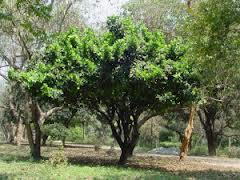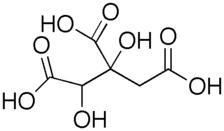- posted: May 13, 2013
Why the interest in Garcinia cambogia weight loss supplement? Weight loss supplements are more popular than ever. Recently, one has become very popular after being highlighted on the Dr Oz show. It was said on that show that Garcinia cambogia extract was the "Holy Grail" of weight loss supplements. Many friends and patients have since asked about its safety and efficacy. Like many Americans who have had frustrations and failures with weight loss challenges, I too am wary about many new marketing promises that are too good to be true. This includes the parade of weight loss supplements touted on different media outlets. My wife and I both plead guilty to trotting down to our local GNC after watching a TV episode or infomercial promising weight loss wonders... Then, in a buddy system of wishful thinking, we subsequently ingest said products on the suggested time-table without success : Chitosan, chromium picolinate, CLA (conjugated Linolenic Acid), B12, guar gum, Rasberry ketones, green tea extract, Green Coffee bean extract, Kunjac root (lipozene), Pyruvate, white bean extract, etc. to name a few. After adding these "weight loss" supplements to a healthy diet and exercise program, most of the time the only thing lighter was our wallets. So, it is with great "relish" and some skepticism that I invite you to explore Garcinia combogia further...
Background of G. cambogia. Garcinia combogia belongs to a group of evergreen trees and shrubs that grow in south Asia, Africa and Malaysia. It is a small to medium size tree that bears dark green leaves and ovoid red or yellow berry fruit. In local cultures, the fruit, which is the size of a tangerine and looks like a miniature pumpkin, has a thick rind and is used as a condiment and appetite suppressant.The plant yields a sap used for varnish.(1) The Garcinia combogia which is most commonly used as weight loss supplement comes from India. The fruit is called the "Malabar Tamarind' or the "Brindall Berry."


In Ayurvedic medicine, the Garcinia combogia is used as an emetic and bowel purger in cases of intestinal parasites. It was also used in cases on oligomenorrhea when meneses was delayed. (3) in south Asia, it is also used for angina. In veterinary medicine it is used as topical applications for bovine mouth disease.
Extracts of the fruit, particularly the rind, are often used as commercial appetite suppressants such as No-Diet Diet, Hydroxycut, Bio-Max3000, Leptoprin, PhytriMax, XanGo, Lite Bites, Garcinia Trim plus, Super ProLean Mega Fat Burner, Body busters, Micro-slim, Lipotrol, Citrichrome, Citrilite, Garcinia-max Diet system. (2) The active ingredient most commonly quoted is Hydroxycitric Acid, but in the "extract" numerous other substances are included: Hydroxycitric acid, garcinol, Malic acid, polyphenols, carbohydrates of anthocyanins, Citric acid, potent anti-oxidants and Ascorbic acid.

Keep your hands and feet inside the ride at all times...here comes the science part....enjoy the ride. The active ingredient in G. combogia extract is the Hydroxycitric acid (HCA) which has been found to be a competitive inhibitor of the enzyme ATP-Citrate Lyase which in the cytosol catalyses the conversion of Citrate to Oxaloacetate and Acetyl coenzymeA. Why is this important? Because Acetyl CoA is necessary in the synthesis of Fatty acids, cholesterol and triglycerides as well as in the synthesis of acetylcholine in the central nervous system. (3)
Theoretically, a reduction in AcetylCoA would result in a reduction of Malonyl CoA to produce indirectly the reduction of peripheral fat stores by activating the Carnitine Palmityl Transferase 1 enzyme which is involved in the transfer of long chain fatty acids in the mitochondria for oxidation. Thus, it slows down the production of fats (lipogenisis) by decreasing the production of fatty acids; and it increases the breakdown of fats (Lipolysis) by increasing oxidation of long chain fatty acids. This ocurrs in a diet where Carbs (glucose) ingested are being limited from being converted to fats. (3)
What has been proven regarding G. cambogia? In literature reviews, it is clear from animal studies that :
- C. gambogia extract with Hydroxycitric acid causes decreased conversion of glucose to fatty acids.
- HCA ingested by mice confirms the reduction in the synthesis of fatty acids, lipogenisis (production of stored fat), appetite suppression and weight loss. (2), (3), (4)
- The end result of limiting the conversion of carbs to fatty acids, is an "accumulation" of Glucose in the way of glycogen stores in the muscles and liver. There they can more readily be used by the body than fat stores.
- An interesting result of the increased glycogen stores and glucose will be the effect of producing a satiety signal and thus appetite suppression similar to Leptin
- The most clear and reproducible cause of weight loss in the animal studies was loss of appetite, as the mice fed HCA did eat less.(2)
- An increased breakdown of fat is seen with G. cambogia ingestion by way of decrease Malonyl CoA. Malonyl Coa is an inhibitor of carnitin acyltransferase, which is required for the oxidation (breakdown) of fat. Thus...down AcetylCoA=down MalonylCoA=Up AcylTransferase=Up oxidation of fat=down fat stores
- One last theorized action of HCA , (not proven, nor disproved) is that of increased thermogenisis. Some investigators have suggested that there is an increase in Brown-fat-like activity where energy is converted to heat rather than energy. There is no evidence that HCA stimulates this process.
What hasn't been proven regarding G. cambogia? In Human clinical studies on G. combogia extract :
- Although some studies show appetite suppression and weight loss in human trials, most have been conducted on small samples, short term, poorly controlled studies.
- Other randomized, larger, placebo controlled clinical trials have not reported statistically significant weight loss results.
- "Therefore, there is still little evidence to support the potential effectiveness and longterm benefits..." (5) the conclusion of a metanalysis review of weight loss supplements.
- One key study in 1998 JAMA, by Heymsfield et. al in 1998, had 135 subjects randomized controlled trial for 12 weeks. It is noteworthy in that it showed no significant weight loss results(placebo actually lost more). Of significance, is the investigators chose to include a low calorie, low carbohydrate, High Fiber diet. (6)
- In general, at recommended doses (3gm G. combogia /day or 1.5gm HCA/day), no studies have shown toxicity, or drug interactions (3), (5) although there are rare reports of lactic acidosis in a diabetic patient. Also, at higher doses mice studies showed testicular atrophy.
Does Garcinia cambogia extract work? What are the conclusions we can draw? Yes it works, in very limited fashion. In mice. Which can easily be blunted and overcome by dietary, activity and health considerations (variables) in Humans. In the tightly controlled environment of animal testing models, it is clear G.cambogia extract meets our theoretical goals. In the much less controlled and unpredictable arena of human clinical trials and anectodal use...the results are all over the map. In the landmark study by Heymsfield in 1998 the results fell short of our desired goals for a weight loss supplement. Why don't the animal studies translate to predictable human results? Because G. cambogia is not a simple appetite suppressant , hyper-metabolic- fat burner like some of the popular prescription amphetamine type drugs.
It seems that G. cambogia ONLY acts as an appetite suppressant AFTER it block glocose(sugar/carb) conversion into fat. G. cambogia inhibits the enzyme in thet pathway being, then the sugar(glucose) builds up as short-term, easily usable glycogen stores in the liver and muscle. Instead of stored in the more stubborn, difficult to use and "burn" adipose(fat) stores. So it actually takes carbohydrate in the diet and keeps it as available sugar(glycogen), rather than long term fat stores. Once this is done, the easy access Glycogen stores can be "burned" and depleted by increase in low level, "anaerobic" activity on a frequent basis, rather than strenuous activity. Once this is done, the excess sugar/glycogen stores can act as an appetite suppressor. Once this is done, the decreased AcetylCoA leads to increase in fat oxidation "burning."
The difficulty in this scenario playing out in the 1998 study may be that the study participants were placed on low carbohydrate , High Fiber diet. And excercise of sufficient frequency and duration was not mandated.
- HCA or C. Cambogia is usualyl taken 1/2 hour to one hour before the primary meals , three times daily. If the diet was high in fiber, than it is likely that the supplement taken 30 to 60 minutes prior would have limited absorption in the gut.
- If the diet is rich in fat and protein calories and low in carbohydrate calories, than the cascade of desired effects caused by blocking an excess of glucose does not ocurr in sufficient amounts to suppress appetite or burn fat.
- If we we do not get an excess of glucose being diverted from fat storage to glycogen storage, we do not get appetite suppression.
- If we do not have a drop in Malonyl CoA, we do not have an increase in the Carnitine pathway and increased "burning" of fat stores (adipose).
- If we do not have a structured, frequent low level activity and negation of a sedantary lifestyle, we do not burn & deplete the excess glycogen stores.
So with this in mind, if you were to use C. gambogia (3gm/day) extract as a primary weight loss supplement (or HCA 1.5gm/day) , then it could be hypothesized that a low glycemic , yet complex carbohydrate adequate diet (30 to 50%), with lean proteins and fats could provide the substrate for the enzyme inhibition key divergence point for glucose at ATP Citrate Lyase enzyme. Frequent activity and strength training would provide a "sink" for the carbs in the glycogen stores surplus which also cause appetite suppression.
IMHO. Dr Nick
References.
- www. FloraCafe.com
- "HydroxyCitrate as a weight lossSupplement" Thomas J. Wheeler, Phd, www.Quackwatch.com
- "Garcinia cambogia" Villar Del Fresno, Angel. Emilia Carretero. Farmacia Profesional.2005 June 19: 70-73
- "Garcinia cambogia" The merican Journal of Clinical Nutrition. Max H. Putter and Edzaard Ernst. April 2004 v.79 p529-36
- "G.Cambogia" Critical Review in Food Science Nutrition. F. Marquez, et. al., 2012 Jul. pp52-57
- Heymsfield SB,Allison DB, Vaselli JR, Pietrobelli A,Greenfield D, Nunez C. Garcinia cambogia(hydroxycitric acid) as a potential antiobesity agent. JAMA 1998.280: 1596-600
